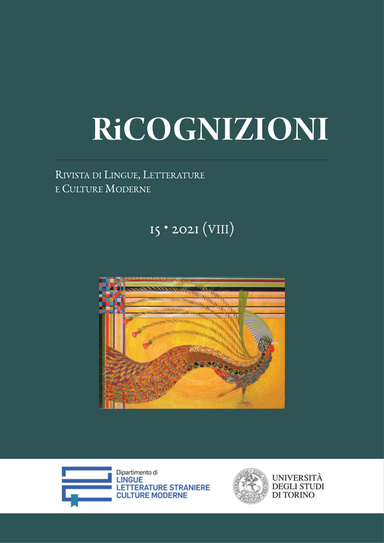A feminilidade da serpente
Subversão, simbologia e sugestão no contexto finissecular
DOI:
https://doi.org/10.13135/2384-8987/5801Abstract
Não parece exagerado afirmar ter sido a serpente um dos animais cuja simbologia menos se alterou ao longo da história do imaginário ocidental. Conhecido como “serpente”, “cobra”, “víbora” ou “áspide”, de uma forma ou outra, esse réptil ganhou seu espaço, talvez pelo medo que é capaz de suscitar. Visto sempre com desconfiança, desde o Éden bíblico, banalizou-se como símbolo do mal em diferentes culturas e épocas. Na conjuntura finissecular, no entanto, adquiriu conotação sutilmente divergente, pois, mesmo quando designava algum aspecto negativo, este, a partir da subversão de valores comuns à literatura da época, pode se tornar positivo (como a visão da morte como algo desejado, por exemplo). No caso, a serpente passou a sugerir o feminino e, mais especificamente, a feminilidade, sugerindo mistério, perigo, sensualidade. Não por acaso foi uma das imagens animalistas mais utilizadas por Charles Baudelaire, tão preocupado como era em representar o feminino de forma transgressora e menos usual. Por consequência, tornou-se imagem importante para poetas simbolistas e decadentes que buscavam nas “flores” baudelairianas imagens nas quais se inspirar, e, dentre estes, nomeadamente, para os autores de língua portuguesa, como Camilo Pessanha, Eugénio de Castro e Cruz e Sousa, em cujas obras abundam as sinuosas figuras ofídicas. A partir desse contexto, o presente trabalho pretende mapear a presença das serpentes na poesia finissecular em contextos francófonos e, particularmente, lusófonos, bem como analisar em qual medida houve renovação ou continuidade da tradição na forma como foi representada nesse período, em contraste com a forma como se cristalizou no imaginário das poéticas anteriores.
Não parece exagerado afirmar ter sido a serpente um dos animais cuja simbologia menos se alterou ao longo da história do imaginário ocidental. Conhecido como “serpente”, “cobra”, “víbora” ou “áspide”, de uma forma ou outra, esse réptil ganhou seu espaço, talvez pelo medo que é capaz de suscitar. Visto sempre com desconfiança, desde o Éden bíblico, banalizou-se como símbolo do mal em diferentes culturas e épocas. Na conjuntura finissecular, no entanto, adquiriu conotação sutilmente divergente, pois, mesmo quando designava algum aspecto negativo, este, a partir da subversão de valores comuns à literatura da época, pode se tornar positivo (como a visão da morte como algo desejado, por exemplo). No caso, a serpente passou a sugerir o feminino e, mais especificamente, a feminilidade, sugerindo mistério, perigo, sensualidade. Não por acaso foi uma das imagens animalistas mais utilizadas por Charles Baudelaire, tão preocupado como era em representar o feminino de forma transgressora e menos usual. Por consequência, tornou-se imagem importante para poetas simbolistas e decadentes que buscavam nas “flores” baudelairianas imagens nas quais se inspirar, e, dentre estes, nomeadamente, para os autores de língua portuguesa, como Camilo Pessanha, Eugénio de Castro e Cruz e Sousa, em cujas obras abundam as sinuosas figuras ofídicas. A partir desse contexto, o presente trabalho pretende mapear a presença das serpentes na poesia finissecular em contextos francófonos e, particularmente, lusófonos, bem como analisar em qual medida houve renovação ou continuidade da tradição na forma como foi representada nesse período, em contraste com a forma como se cristalizou no imaginário das poéticas anteriores.
##submission.downloads##
Pubblicato
Come citare
Fascicolo
Sezione
Licenza
Gli autori che pubblicano su questa rivista accettano le seguenti condizioni:- Gli autori mantengono i diritti sulla loro opera e cedono alla rivista il diritto di prima pubblicazione dell'opera, contemporaneamente licenziata sotto una Licenza Creative Commons - Attribuzione che permette ad altri di condividere l'opera indicando la paternità intellettuale e la prima pubblicazione su questa rivista.
- Gli autori possono aderire ad altri accordi di licenza non esclusiva per la distribuzione della versione dell'opera pubblicata (es. depositarla in un archivio istituzionale o pubblicarla in una monografia), a patto di indicare che la prima pubblicazione è avvenuta su questa rivista.
- Gli autori possono diffondere la loro opera online (es. in repository istituzionali o nel loro sito web) prima e durante il processo di submission, poiché può portare a scambi produttivi e aumentare le citazioni dell'opera pubblicata (Vedi The Effect of Open Access).








